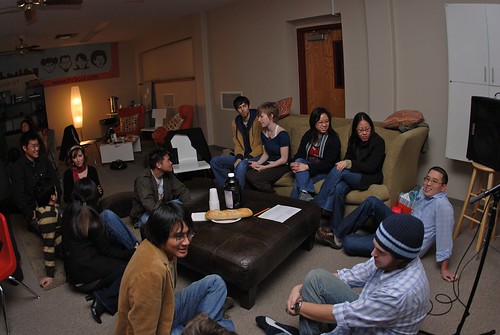 |
| Photo Credit: Enoch Lai |
"But what’s really unexpected about Vox, to anyone who knows American Protestantism, is that what began as a church for Chinese-Americans quickly became multiracial. Last Sunday morning, whites were in the majority, and in addition to Asian-Americans, there were Latinos and African-Americans in the pews — or, rather, the metal folding chairs around the small stage where a six-piece band played before the pastor, the Rev. Gideon Tsang, delivered his sermon.
In a country that is growing more racially diverse, and in an evangelical movement that is becoming more politically diverse, Vox Veniae, which is Latin for “voice of forgiveness,” may be, as Jesus said, a sign of the times.
Racially diverse churches are often led by white pastors who recruit in minority communities, usually by hiring nonwhite assistant pastors. It is less common to see an ethnic church attract whites. It may be that white people avoid churches where at first they will be outnumbered. Or perhaps the ethnic churches’ worship styles feel alien (especially if prayers and sermons are in a foreign language). Whatever the reason, white churches sometimes succeed in drawing minority worshipers, but minority churches rarely attract white people.
Mr. Tsang sports arm tattoos and the modish, buzzed-on-the-sides, long-on-top haircut that many young men who request it call “the Hitler Youth.” He was raised in Toronto, the son of a Chinese-Canadian pastor of an ethnic church. In 2006, he started Vox Veniae as an independent planting of the Austin Chinese Church, a larger church that wanted a mission to young people, especially University of Texas students. In 2007, the church opened Space 12, and in 2009, it moved its worship services there. Along the way, it began to draw older people. And whiter people.
“The average age when we started was 22,” Mr. Tsang said. “Today, the average age is 27, 28.” Last Sunday, I sat behind a woman who must have been in her 60s. When she had trouble reading the passage from I Corinthians on the monitor above, her neighbor, about 40 years younger, whispered the words in her ear."To read the complete article please click here.
(HT: DJ Chuang for the link.)
No comments:
Post a Comment